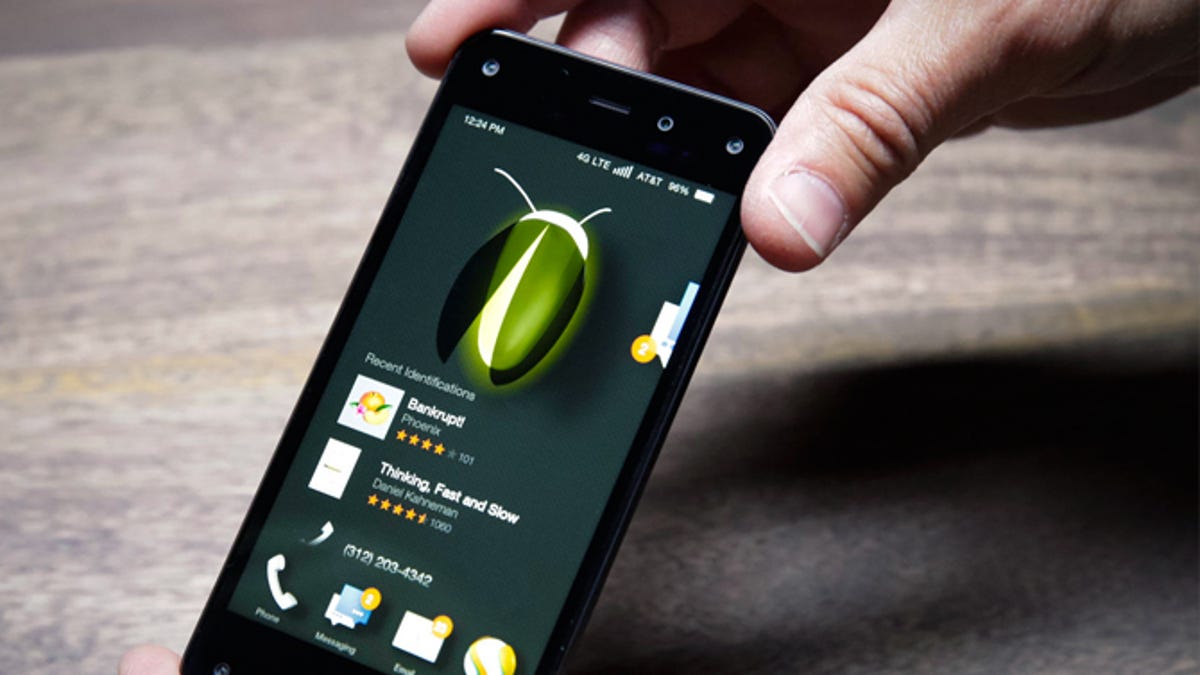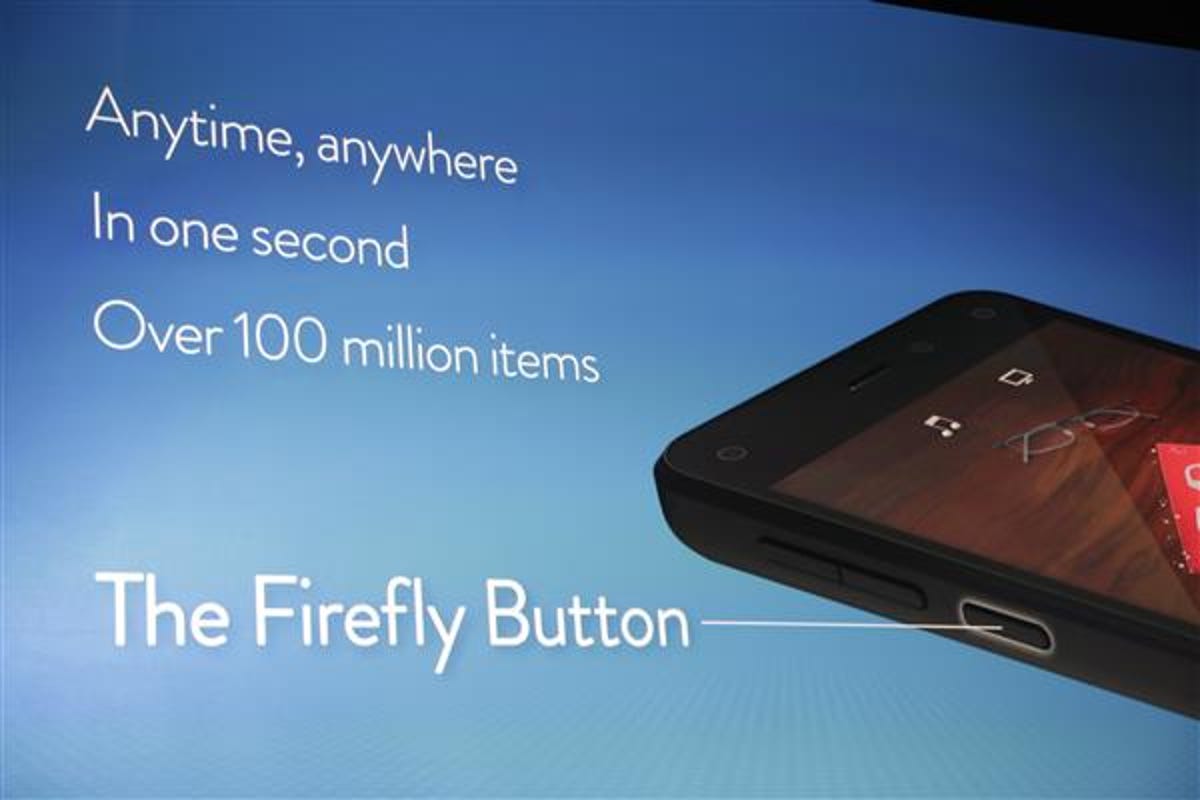
James Martin/CNET
Nobody ever said Amazon CEO Jeff Bezos was discreet.
With Wednesday’s unveiling of the e-commerce giant’s long-rumored smartphone, the Fire Phone , Amazon has waded waist-deep into a battlefield of entrenched incumbents with ecosystems chock-full of services and software Bezos would love to supersede.
Related Links
- Amazon’s big bet: How a smartphone intensifies war with Apple, Google
- Amazon phone: Forget the 3D gimmicks. It’s all about the price
- As smartphone nears, Amazon says Appstore library nearly triples
But Bezos isn’t tying to dethrone Apple’s iPhone or Samsung’s Galaxy line of devices so much as he is doing what he always does: trying to get customers to buy more stuff from Amazon. That’s where Firefly, the scanning and identification feature, comes in.
Firefly, which undoubtedly stole the show today at the Fire Phone reveal, is not inherently novel. It’s more a compendium of existing smartphone features in a single-serving experience. With the press of a button, you can scan and tag songs — much like the popular Shazam app — and films and TV thanks to IMDb.com, which Amazon owns. You also can identify text and phone numbers printed on paper, like countless third-party apps in the iOS and Android stores.
The linchpin of the feature, however, is a barcode-scanning and product-recognition function that lets you identify and price check more than 70 million products — and then order straight from Amazon if it’s cheaper. Chances are it will be cheaper.


James Martin/CNET
Firefly is actually very similar to Amazon’s Flow function, which it spun off into an Android app and incorporated directly into its iOS app back in February. Flow gave you a somewhat goofy augmented reality interface with which to scan items to price check with Amazon’s offering.
Firefly seems not only more powerful, but it’s a far more overt proposition to customers — a more or less shameless march against every retail store a Fire Phone could ever set foot inside, making the device an Amazon buying machine like no other.
Firefly is not just a smartphone parlor trick. There’s a reason it’s got its own dedicated button right there on the side of the device. Firefly is at the core of why Amazon is releasing a smartphone. It’s handing customers a handheld, pocket-size toolkit to undercut every possible product category that exists in physical stores everywhere. Meanwhile, it’s beefing up its usefulness for contextual database searching when it comes to tagging and Wiki searching media and scanning text and phone numbers.
You can imagine a Fire Phone user simply strolling the grocery store aisle, price checking everything in sight with Prime Pantry, Amazon’s grocery and supplies hub, and adding it to his or her online shopping cart, checking out online only after picking up the items at the store that can’t be shipped. It’s an even more useful service when you image what it could do for books at Barnes & Noble, a television set at Best Buy, cleaning supplies at Target, or a video game at GameStop. For even smaller, more local shops that offer small-town appeal and immediacy in exchange for typically higher prices, the outlook of a Firefly world isn’t good.
Going hands-on with the Amazon Fire Phone (pictures)






+18 more
Of course, this can — and is — all being done today, with every browser-enabled phone and in stores everywhere in what retailers refer to as showrooming. But Amazon is using Firefly to grease the wheels, making it easier than ever to impulse buy from Amazon instead of buying the item in person, even when the price difference is entirely negligible.
With Amazon Prime, the company’s shipping and content membership program, now speedier and more efficient than ever before, the era of going out to the store to purchase something is coming to an end. To that end, Amazon is giving 12 months of Prime for free with a Fire Phone purchase. Amazon knows that keeping its customers loyal to its marketplace means they’re more likely to see the Fire Phone as a viable option for a next smartphone — and that once they do own that phone, they’ll be even more likely to direct more and more of their buying power at Amazon.com.
With the Fire Phone and Firefly, Amazon has found a way to create an even more efficient, cyclical funnel toward its own products and services in a way that rivals the strategy of both Apple’s walled garden philosophy and Google’ s free, data-sharing ecosystem. So while it may not sell anywhere near the level of a new iPhone, Amazon has its sights set on strengthening its network — and helping its customers build the roads.


Now playing:
Watch this:
Amazon debuts Firefly technology
6:02



